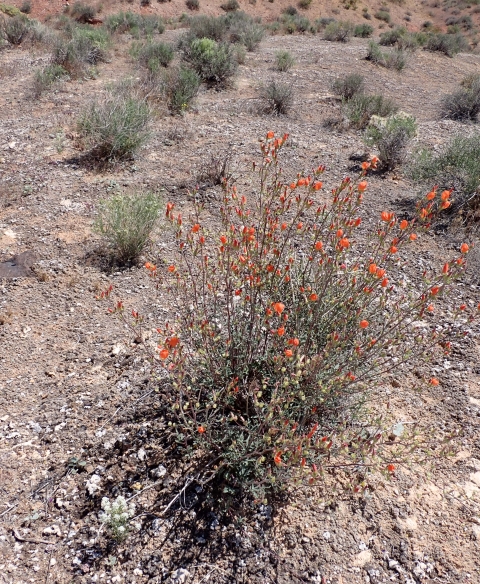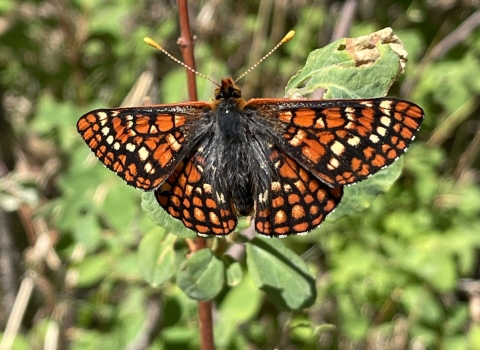PHOENIX – The U.S. Fish and Wildlife Service is seeking public comments on a draft recovery plan for the Gierisch mallow, an endangered plant found in Mohave County, Arizona, and Washington County, Utah. A 30-day public comment period closes on Aug. 29, 2024.
Recovery plan goals for Gierisch mallow include maintaining multiple, self-sustaining populations across its known range, decreasing threats to the species and continuing habitat restoration efforts in disturbed areas.
In 2013, the Gierisch mallow was granted federal protection and listed as endangered with approximately 12,822 acres of critical habitat in Mohave County, Arizona, and Washington County, Utah. Its small population size and restricted range contribute to Gierisch mallow’s susceptibility to extinction. The primary threat at the time of listing was habitat destruction from mining. Other potential threats include activities such as livestock grazing and recreational use, climate change climate change
Climate change includes both global warming driven by human-induced emissions of greenhouse gases and the resulting large-scale shifts in weather patterns. Though there have been previous periods of climatic change, since the mid-20th century humans have had an unprecedented impact on Earth's climate system and caused change on a global scale.
Learn more about climate change and expanding nonnative grasses.
“Gierisch mallow is a showy flowering plant that contributes to the beauty and biodiversity of the Mojave Desert,” said Jessica Miller, Fish and Wildlife Biologist with the Service’s Arizona Ecological Services Field Office. “The recovery plan will detail how we will work with our partners to conserve and recover the species.”
Gierisch mallow is a member of the plant genuscommonly referred to as globemallows (Sphaeralcea). Although it has been found on other soil types, it grows predominantly on gypsum outcrops, where it thrives in soils inhospitable to many other plants. As a perennial, Gierisch mallow dies back in the winter, and dark red-purple stems re-sprout from its woody base during the spring. Its stems range in size from about half a foot to nearly 3.5 feet tall. It has hairless and spindly, egg-shaped leaves with three to five lobes. In early spring, multiple bright orange flowers bloom along its flowering stalks.
Recovery plans are not regulatory. Rather they provide a framework for guiding a species’ recovery, criteria we expect will indicate that federal protection is no longer necessary, and actions needed to recover the species. Specific recovery plan objectives for Gierisch mallow include researching the plant’s distribution and life history, restoring habitat and re-establishing Gierisch mallow in mined areas, researching Gierisch mallow’s response to potential non-mining threats, and reducing the effects of threats by implementing conservation measures.
The draft recovery plan is available at ecos.fws.gov/ecp/species/8873. The Service will consider comments received by Aug. 29, 2024. We encourage the public, federal and state agencies, Tribes, and other stakeholders to review the draft recovery plan and provide comments. Stewardship lays the foundation for achieving our conservation mission through the responsible management of the fish, wildlife, plants and habitats.




